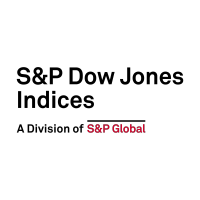Tag Archives: SPIVA
Exploring Fixed Income’s Passive Potential
Passive investing has historically been more associated with equities than with fixed income, but recent data indicates a change could be in the winds. S&P DJI’s Tim Edwards and Anu Ganti take a closer look at what’s driving the shift and what a passive transformation could mean for fixed income markets.
- Categories Fixed Income
- Other Tags
Time, Trust and Trading
As the bull market in U.S. equities continues, with the S&P 500® up 18% YTD,1 we have witnessed in parallel an extraordinary time in the fixed income markets. Historically low credit spreads have led to the outperformance of high yield bonds relative to corporate bonds and corporate bonds relative to Treasuries. The iBoxx USD High…
- Categories Fixed Income
- Other Tags
- Categories
- Fixed Income
- Other Tags
How Indexing Works for Model Portfolios
What’s the role of indices in constructing and evaluating model portfolios? S&P DJI’s Joseph Nelesen and BlackRock’s Elise Terry explore how indexing is changing the landscape for advisors and their clients and helping a range of market participants build and assess models across the asset class spectrum.
- Categories Equities
- Other Tags
SPIVA Japan Scorecard 2023: Misfortune for Japanese Stock Pickers
Since the first publication of the S&P Indices Versus Active (SPIVA®) U.S. Scorecard in 2002, S&P Dow Jones Indices has regularly reported on the relative performance of actively managed funds versus benchmark indices across an increasing number of global fund markets and fund categories.1 The SPIVA Japan Scorecard has been tracking the performance of active…
- Categories Equities
- Other Tags
- Categories
- Equities
- Other Tags
Turtle Returns: The Hare and the Tortoise
The tale of a footrace between a determined tortoise and a swift but ultimately complacent hare has been with us for a long time. The earliest known version is two and a half thousand years old; it begins with the hare mocking the tortoise’s slow feet, which leads to a challenge and a contest, and…
- Categories Fixed Income
- Other Tags
Financial Planning Using Indices: From Taxes to Factors
How are advisors putting SPIVA data and factors to work as they build long-term plans to help clients achieve objectives? Delta Wealth Advisors’ Dino Efthimiou and Niko Finnigan join S&P DJI’s Brent Kopp for a practical look at the importance of tax management and the role of indexing in building a comprehensive plan for clients….
- Categories Factors
- Other Tags
Getting to Know the SPIVA After-Tax Scorecard
What do the SPIVA Scorecard results look like once you factor in taxes? Join S&P DJI’s Anu Ganti and Joseph Nelesen for a deep dive into key findings from the inaugural SPIVA After-Tax Scorecard.
- Categories Equities
- Other Tags
- Categories
- Equities
- Other Tags
Chasing Performance
“…sometimes I’ve believed as many as six impossible things before breakfast.” – The White Queen, Through the Looking Glass Should an asset owner rely on historical performance data to select managers? The efficacy of doing so depends on the answers to three questions: What fraction of the manager universe is truly gifted? How gifted are…
- Categories Equities, S&P 500 & DJIA
- Other Tags
Surveying the Latest SPIVA India Scorecard Results
Were active and fixed income fund managers able to keep up with their benchmarks in the latest SPIVA India Scorecard? Dive into the latest results with S&P DJI’s Bhavna Sadarangani and Benedek Vörös.
- Categories Equities, Fixed Income
- Other Tags
- Categories
- Equities, Fixed Income
- Other Tags
What Do Insurance Companies Need to Know About SPIVA?
How and when are insurers implementing index-based strategies as they seek liquidity, diversification, and risk mitigation? S&P DJI’s Raghu Ramachandran and Anu Ganti join BlackRock’s Andrew Masalin to discuss what’s driving passive outperformance and the use of ETFs by insurers through the lens of SPIVA.
- Categories Equities, Fixed Income
- Other Tags













































